4-я Красноармейская, 2А
Санкт-Петербург, 190005
Email: info@lenmoto.ru
Телефон: +7 (921) 930-81-18
Телефон: +7 (911) 928-08-06
Компания ЛенМото
Запчасти, аксессуары, экипировка, тюнинг для мотоциклов, скутеров, квадроциклов, снегоходов, багги, гидроциклов, катеров и лодочных моторов.
Подпишитесь на наши новости
Подписаться
Safety First
Safe Operating Rules
Motorcycles are different from other vehicles. They
operate, steer, handle and brake differently. Unskilled or
improper use could result in loss of control, death or
serious injury. (00556c)
Take a rider training course.
Read Owner’s Manual before riding, adding accessories or servicing.
Wear a helmet, eye protection and protective clothing.
Never tow a trailer.
Before operating your new motorcycle it is your responsibility to read and follow the operating and
maintenance instructions in this manual, and follow these basic rules for your personal safety.
Know and respect the rules of the road. See Rules of the Road. Carefully read and
familiarize yourself with the motorcycle safety information that is provided by your country or
state. In the United States, read the RIDING TIPS booklet that is provided with your Owner’s
Manual, and read through the MOTORCYCLE HANDBOOK which is made available by your
state.
Before starting engine, check for proper operation of brake, clutch, shifter, throttle controls,
correct fuel and oil supply.
Harley Davidson parts and accessories are designed for
Harley Davidson motorcycles. Using non Harley Davidson
parts or accessories can adversely affect performance,
stability or handling, which could result in death or serious
injury. (00001b)
Use only Harley Davidson approved parts and accessories. Use of certain other
manufacturer’s performance parts will void your new motorcycle warranty. See your Harley
Davidson dealer for details.
Stop the engine when refueling or servicing the fuel
system. Do not smoke or allow open flame or sparks near
gasoline. Gasoline is extremely flammable and highly
explosive, which could result in death or serious injury.
(00002a)
When refueling your motorcycle, the following rules should be observed.
2012 V Rod Muscle Owner’s Manual
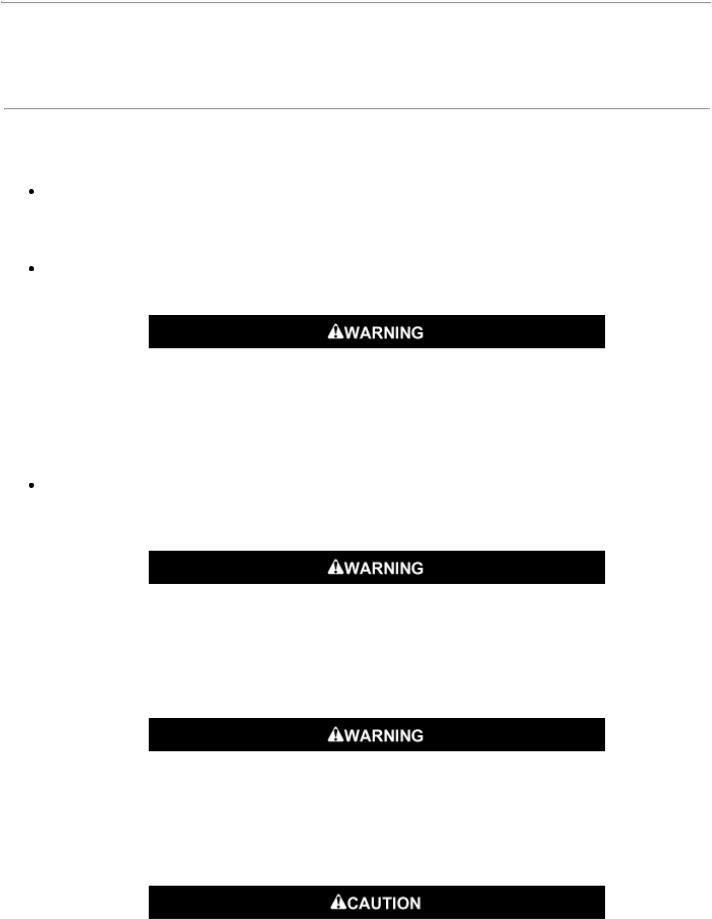
2006 VRSCA VRod Owner’s Manual
Safety First
Safe Operating Rules: VRSC Models
Before operating your new motorcycle it is your responsibility to read and follow the operating and maintenance instructions in this manual, and follow these basic rules for your personal safety.
Know and respect the rules of the road (see RULES OF THE ROAD section). Carefully read and observe the rules contained in the RIDING TIPS booklet accompanying this Owner’s Manual. Read and familiarize yourself with the contents of the MOTORCYCLE HANDBOOK for your state.
Before starting engine, check for proper operation of brake, clutch, shifter, throttle controls, correct fuel and oil supply.
Do not use aftermarket parts and custom made front forks which can adversely affect performance and handling. Removing or altering factory installed parts can adversely affect performance and could result in death or serious injury. (00001a)
Use only HarleyDavidson approved parts and accessories. Use of certain other manufacturer’s performance parts will void your new motorcycle warranty. See your Harley Davidson dealer for details.
Stop the engine when refueling or servicing the fuel system. Do not smoke or allow open flame or sparks near gasoline. Gasoline is extremely flammable and highly explosive, which could result in death or serious injury. (00002a)
Do not remove radiator filler cap when engine is hot. The cooling system is under pressure and hot coolant and steam can escape, which could cause severe burns. Allow engine to cool before servicing the cooling system. (00091a)
At operating temperature, the radiator and oil cooler contain hot fluids. Contact with the radiator or oil cooler can result in minor or moderate burns. (00141a)
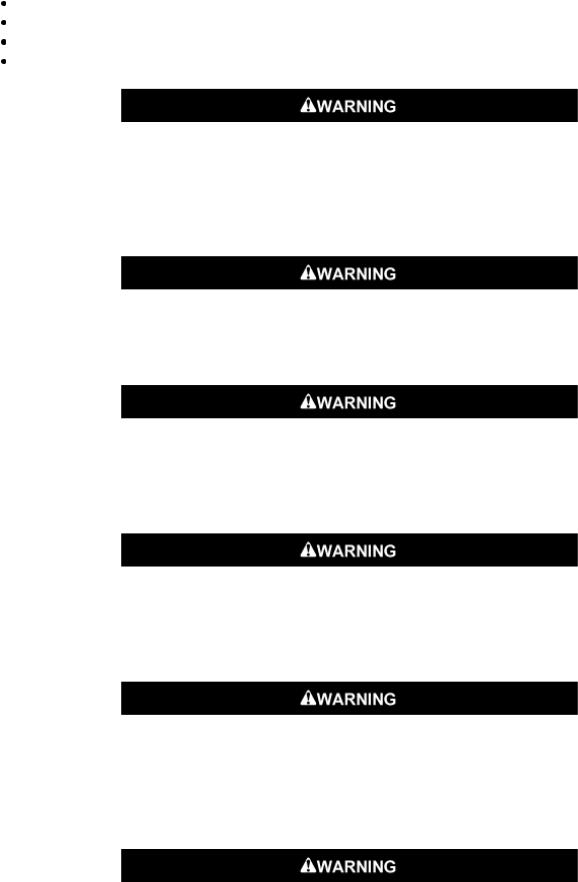
When refueling your motorcycle, the following rules should be observed.
Refuel in a well ventilated area with the engine turned off. Remove fuel filler cap slowly.
Do not smoke or allow open flames or sparks when refueling or servicing the fuel system. Leave air space to allow for fuel expansion.
Do not store motorcycle with gasoline in tank within the home or garage where open flames, pilot lights, sparks or electric motors are present. Gasoline is extremely flammable and highly explosive, which could result in death or serious injury. (00003a)
Engine exhaust from this product contains chemicals known to the State of California to cause cancer and birth defects or other reproductive harm. (00004e)
Wheel weights on wheels without spokes contain lead and lead compounds, chemicals known to the State of California to cause cancer and birth defects or other reproductive harm. (00356b)
Do not run motorcycle in a closed garage or confined area. Inhaling motorcycle exhaust, which contains poisonous carbon monoxide gas, could result in death or serious injury. (00005a)
The jiffy stand locks when placed in the full forward (down) position with vehicle weight on it. If the jiffy stand is not in the full forward (down) position with vehicle weight on it, the vehicle can fall over which could result in death or serious injury. (00006a)
Be sure jiffy stand is fully retracted before riding. If jiffy stand is not fully retracted, it can contact the road surface causing a loss of vehicle control, which could result in death or serious injury. (00007a)

A new motorcycle must be operated according to the special breakin procedure. See
Breakin Riding Rules: VRSC Models.
Operate motorcycle only at moderate speed and out of traffic until you have become thoroughly familiar with its operation and handling characteristics under all conditions.
NOTE:
We recommend that you obtain information and formal training in the correct motorcycle riding
technique. The Motorcycle Safety Foundation® offers beginning and advanced rider safety courses. Call (949)7273227 for information.
Travel at speeds appropriate for road and conditions and never travel faster than posted speed limit. Excessive speed can cause loss of vehicle control, which could result in death or serious injury. (00008a)
Do not exceed the legal speed limit or drive too fast for existing conditions. Always reduce speed when poor driving conditions exist. High speed increases the influence of any other condition affecting stability and increases the possibility of loss of control.
Pay strict attention to road surfaces and wind conditions. Any two wheeled vehicle may be subject to upsetting forces such as wind blasts from passing trucks, holes in the pavement, rough road surfaces, rider control error, etc. These forces may influence the handling characteristics of your motorcycle. If this happens, reduce speed and guide the motorcycle with a relaxed grip to a controlled condition. Do not brake abruptly or force the handlebar. This may aggravate an unstable condition.
Keep cargo weight concentrated close to the motorcycle and as low as possible to minimize the change in the motorcycle’s center of gravity. Distribute weight evenly on both sides of the vehicle and do not load bulky items too far behind the rider or add weight to the handlebars or front forks. Do not exceed maximum specified load in each saddlebag.
NOTE:
New riders should gain experience under various conditions while driving at moderate speeds.
Operate your motorcycle defensively. Remember, a motorcycle does not afford the same protection as an automobile in an accident. One of the most common accident situations occurs when the driver of the other vehicle fails to see or recognize a motorcycle and turns left into the oncoming motorcyclist. Operate only with headlamp on.
Wear an approved helmet, clothing, and foot gear suited for motorcycle riding. Bright or light colors are best for greater visibility in traffic, especially at night. Avoid loose, flowing garments and scarves.
Avoid contact with exhaust system and wear protective clothing that completely covers legs while riding. Exhaust pipes and mufflers get very hot when engine is running and remain too hot to touch, even after engine is turned off. Failure to wear protective clothing could result in burns or other serious injury. (00009a)
When carrying passengers, it is your responsibility to instruct them on proper riding
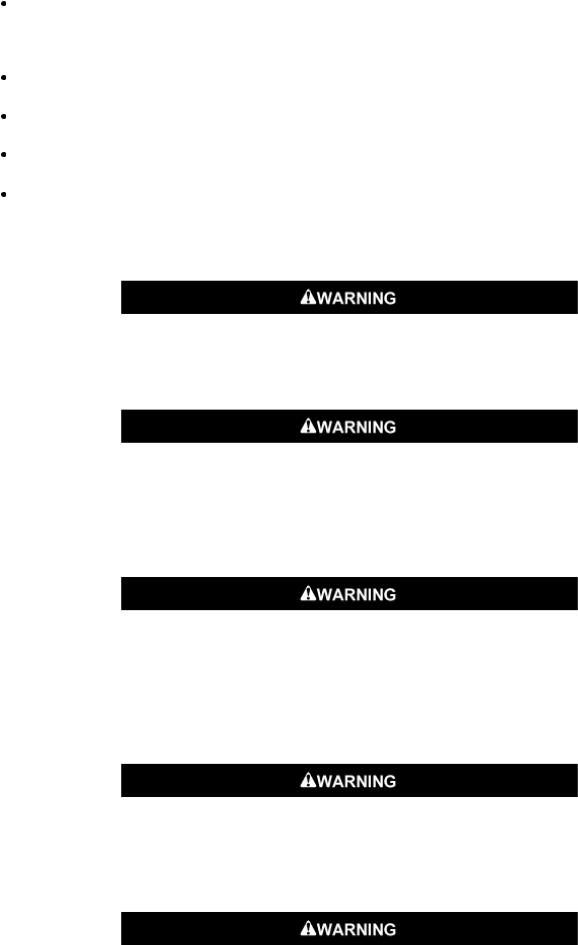
procedures. (See Riding Tips included in your HarleyDavidson Owner’s Kit.)
Do not allow other individuals, under any circumstances, to operate your motorcycle unless you know they are experienced, licensed riders and are thoroughly familiar with the operation of your particular motorcycle.
Protect your motorcycle against theft. After parking your motorcycle, lock the steering head and remove ignition key from switch. Set security alarm if present.
Safe motorcycle operation requires alert mental judgment combined with a defensive driving attitude. Do not allow fatigue, alcohol or drugs to endanger your safety or that of others. Vehicles equipped with a sound system should have the volume adjusted to a nondistracting level before operating vehicle.
Maintain your motorcycle in proper operating condition in accordance with Regular Service Intervals: 2006 VRSC Models. Particularly important to motorcycle stability is proper tire inflation pressure, tread condition, and proper adjustment of wheel bearings and steering head bearings.
Do not operate vehicle with forks locked. Locking the forks restricts the vehicle’s turning ability, which could result in death or serious injury. (00035a)
Perform the service and maintenance operations as indicated in the regular service interval table. Lack of regular maintenance at the recommended intervals can affect the safe operation of your motorcycle, which could result in death or serious injury. (00010a)
Do not operate motorcycle with loose, worn or damaged steering or suspension systems. Contact a Harley Davidson dealer for repairs. Loose, worn or damaged steering or suspension components can adversely affect stability and handling, which could result in death or serious injury. (00011a)
Regularly inspect shock absorbers and front forks. Replace leaking, damaged or worn parts that can adversely affect stability and handling, which could result in death or serious injury. (00012a)
Use HarleyDavidson replacement fasteners. Aftermarket fasteners can adversely affect performance, which could
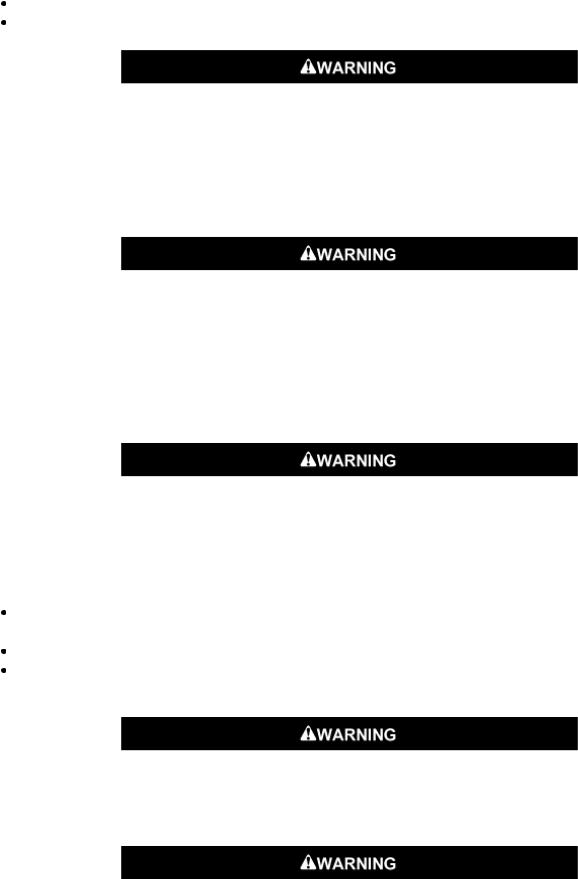
result in death or serious injury. (00013a)
See a HarleyDavidson service manual for proper torque values.
Aftermarket fasteners may not have the specific property requirements to perform properly.
Be sure tires are properly inflated, balanced and have adequate tread. Inspect your tires regularly and see a HarleyDavidson dealer for replacements. Riding with excessively worn, unbalanced or underinflated tires can adversely affect stability and handling, which could result in death or serious injury. (00014a)
Replace punctured or damaged tires. In some cases, small punctures in the tread area may be repaired from within the demounted tire by a HarleyDavidson dealer. Speed should NOT exceed 50 mph (80 km/h) for the first 24 hours after repair, and the repaired tire should NEVER be used over 80 mph (130 km/h). Failure to follow this warning could result in death or serious injury. (00015a)
Do not exceed the motorcycle’s Gross Vehicle Weight Rating (GVWR) or Gross Axle Weight Rating (GAWR). Exceeding these weight ratings can affect stability and handling, which could result in death or serious injury. (00016e)
GVWR is the sum of the weight of the motorcycle, accessories, and the maximum weight of the rider, passenger and cargo that can be safely carried.
GAWR is the maximum amount of weight that can be safely carried on each axle.
The GVWR and GAWR are shown on the information plate, located on the frame down tube.
Do not tow a disabled motorcycle. Towing can adversely affect stability and handling, which could result in death or serious injury. (00017a)
Do not pull a trailer with a motorcycle. Pulling a trailer can cause tire overload, reduced braking efficiency and adversely affect stability and handling, which could result in death or serious injury. (00018b)
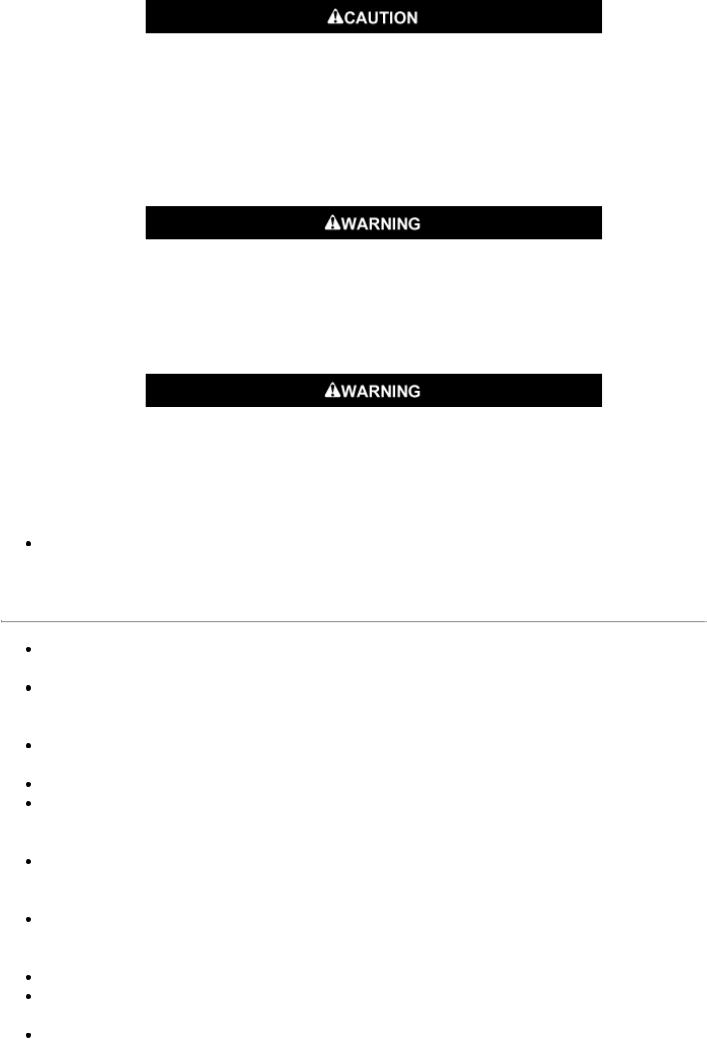
Direct contact of D.O.T. 4 brake fluid with eyes can cause irritation. Avoid eye contact. In case of eye contact flush with large amounts of water and get medical attention.
Swallowing large amounts of D.O.T. 4 brake fluid can cause digestive discomfort. If swallowed, obtain medical attention. Use in well ventilated area. KEEP OUT OF REACH OF CHILDREN. (00240a)
Batteries, battery posts, terminals and related accessories contain lead and lead compounds, and other chemicals known to the State of California to cause cancer and birth defects or other reproductive harm. Wash hands after handling. (00019d)
Consult a HarleyDavidson dealer regarding any questions or problems that occur in the operation of your motorcycle. Failure to do so can aggravate an initial problem, cause costly repairs, cause an accident and could result in death or serious injury. (00020a)
Be sure all equipment required by federal, state and local law is installed and in good operating condition.
Rules of the Road
Keep to the right side of the road centerline when meeting other vehicles coming in the opposite direction. Ride to left of center of your lane to avoid oily pavement ahead.
Always sound your horn, actuate your turn signals, and exercise caution when passing other vehicles going in the same direction. Never try to pass another vehicle going in the same direction at street intersections, on curves, or when going up or down a hill.
At street intersections give the rightofway to the vehicle on your right. Do not presume you have the rightofway, as the other driver may not know it is your turn.
Always signal when preparing to stop, turn or pass.
All traffic signs, including those used for the control of traffic at intersections, should be obeyed promptly. SLOW DOWN signs near schools and CAUTION signs at railroad crossings should always be observed and your actions governed accordingly.
When intending to turn to the left, signal at least 100 feet (30.5 meters) before reaching the turning point. Move over to the centerline of the street (unless local rules require otherwise), slow down, enter the intersection of the street and then turn carefully to the left.
Never anticipate a traffic light. When a change is indicated from GO to STOP (or vice versa) in the traffic control systems at intersections, slow down and wait for the light to change. Never run through a yellow or red traffic light.
While turning either right or left, watch for pedestrians, animals, as well as vehicles.
Do not leave the curb or parking area without signaling. Be sure your way is clear to enter moving traffic. A moving line of traffic always has the rightofway.
Be sure your license plate is installed in the position specified by law and is clearly visible at

all times. Keep the plate clean.
Ride at a safe speed that is consistent with the type of highway you are on. Pay strict attention to whether the road is dry, oily, icy or wet.
Watch for debris such as leaves or loose gravel.
Weather and traffic conditions on the highway dictate adjusting your speed and driving habits accordingly.
Accessories and Cargo
HarleyDavidson Motor Company cannot test and make specific recommendations concerning every accessory or combination of accessories sold. Therefore, the rider must be responsible for safe operation of the motorcycle when installing accessories or carrying additional weight.
See the Accessory and Cargo section in your Owner’s Manual. Improper loading of cargo or installation of accessories can affect motorcycle stability and handling, which could result in death or serious injury. (00021a)
Do not exceed the motorcycle’s Gross Vehicle Weight Rating (GVWR) or Gross Axle Weight Rating (GAWR). Exceeding these weight ratings can affect stability and handling, which could result in death or serious injury. (00016e)
GVWR is the sum of the weight of the motorcycle, accessories, and the maximum weight of the rider, passenger and cargo that can be safely carried.
GAWR is the maximum amount of weight that can be safely carried on each axle.
The GVWR and GAWR are shown on the information plate which is located on the frame down tube.
Do not pull a trailer with a motorcycle. Pulling a trailer can cause tire overload, reduced braking efficiency and adversely affect stability and handling, which could result in death or serious injury. (00018b)
Accessory and Cargo Guidelines
The following guidelines should be used when equipping a motorcycle, carrying passengers and/or cargo.
Travel at speeds appropriate for road and conditions and
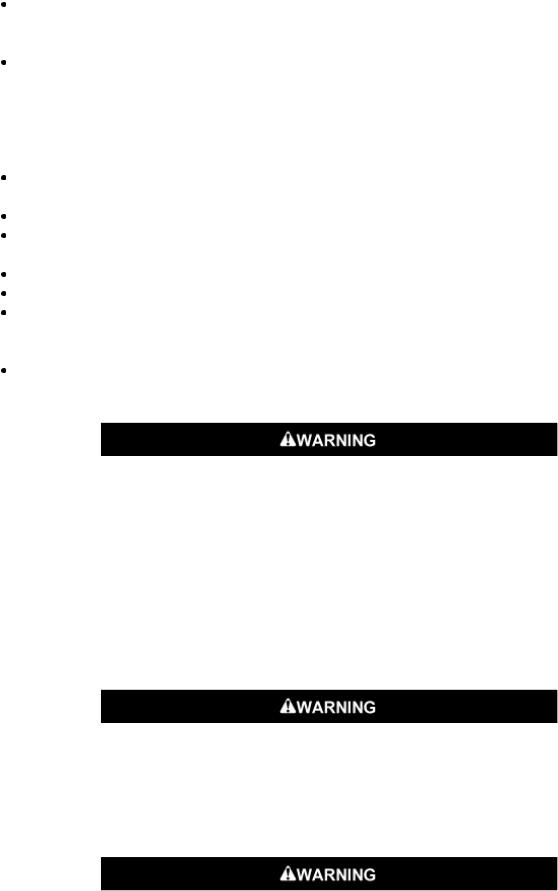
never travel faster than posted speed limit. Excessive speed can cause loss of vehicle control, which could result in death or serious injury. (00008a)
Do not exceed the legal speed limit or drive too fast for existing conditions. Always reduce speed when poor driving conditions exist. High speed increases the influence of any other condition affecting stability and increases the possibility of loss of control.
Pay strict attention to road surfaces and wind conditions. Any two wheeled vehicle may be subject to upsetting forces such as wind blasts from passing trucks, holes in the pavement, rough road surfaces, rider control error, etc. These forces may influence the handling characteristics of your motorcycle. If this happens, reduce speed and guide the motorcycle with a relaxed grip to a controlled condition. Do not brake abruptly or force the handlebar. This may aggravate an unstable condition.
Keep cargo weight concentrated close to the motorcycle and as low as possible. This minimizes the change in the motorcycle’s center of gravity.
Distribute weight evenly on both sides of the vehicle.
Do not load bulky items too far behind the rider or add weight to the handlebars or front forks.
Do not exceed maximum specified load in each saddlebag.
Luggage racks are designed for lightweight items. Do not overload racks.
Be sure cargo is secure and will not shift while riding and recheck the cargo periodically. Accessories that change the operator’s riding position may increase reaction time and affect handling of the motorcycle.
Additional electrical equipment may overload the motorcycle’s electrical system possibly resulting in electrical system and/or component failure.
The front and/or rear guard(s) can provide limited leg and cosmetic vehicle protection under unique circumstances. (Fall over while stopped, very slow speed slide.) It is not made or intended to provide protection from bodily injury in a collision with another vehicle or any other object.
(00022a)
Large surfaces such as fairings, windshields, back rests, and luggage racks can adversely affect handling. Only genuine HarleyDavidson items designed specifically for the motorcycle model should be used with proper installation.
Do not use aftermarket parts and custom made front forks which can adversely affect performance and handling. Removing or altering factory installed parts can adversely affect performance and could result in death or serious injury. (00001a)
Only Touring HarleyDavidson Motorcycles are suitable for sidecar use. Consult a HarleyDavidson dealer. Use of
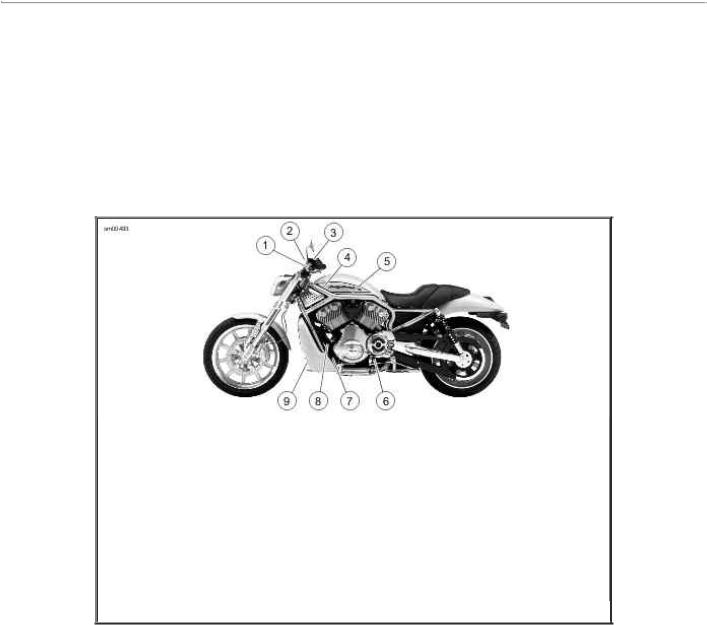
motorcycles other than Touring models with sidecars could result in death or serious injury. (00040a)
Identification
2006 VRSC Models
This section provides left and right side views of your 2006 VRSC model motorcycle. Please refer to the CONTROLS AND INDICATORS and OPERATION sections for specific details about each component.
NOTE:
Specifications in this publication may not match those of official certification in some markets due to timing of publication printing, variance in testing methods, and/or vehicle differences. Customers seeking officially recognized regulatory specifications for their vehicle should refer to certification documents and/or contact their respective dealer or distributor.
1.Tachometer/speedometer
2.Fuel gauge
3.Clutch reservoir
4.Battery
5.Air cleaner
6.Gear shift lever
7.Dipstick
8.Cooling fans
9.Radiator
2006 VRSCR Street Rod Left Side View
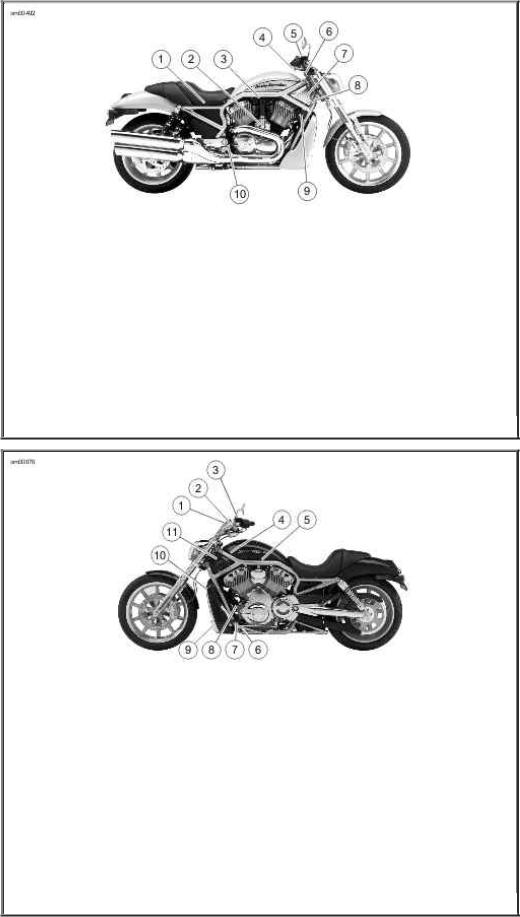
1.Fuel filler cap (under seat)
2.Water pump
3.Thermostat
4.Odometer reset switch
5.Front brake master cylinder and switch
6.Fork lock
7.Coolant overflow bottle
8.Maxifuse
9.Ignition switch
10.Rear brake master cylinder
2006 VRSCR Street Rod Right Side View
1.Tachometer/speedometer
2.Fuel gauge
3.Clutch reservoir
4.Battery
5.Air cleaner
6.Engine oil drain
7.Engine oil filter
8.Dipstick
9.Oil cooler
10.Radiator
11.ECM
2006 VRSCA VRod Left Side View

1.Fuel filler cap (under seat)
2.Ignition switch/seat release
3.Water pump
4.Thermostat
5.Odometer reset switch
6.Front brake master cylinder and switch
7.Fork lock
8.Coolant overflow bottle
9.Maxifuse
10.Rear brake reservoir
11.Rear brake master cylinder
2006 VRSCA VRod Right Side View
1.Tachometer/speedometer
2.Fuel gauge
3.Clutch reservoir
4.Battery
5.Air cleaner
6.Gear shift lever
7.Dipstick
8.Oil cooler
9.Radiator
10.ECM
2006 VRSCD Night Rod Left Side View
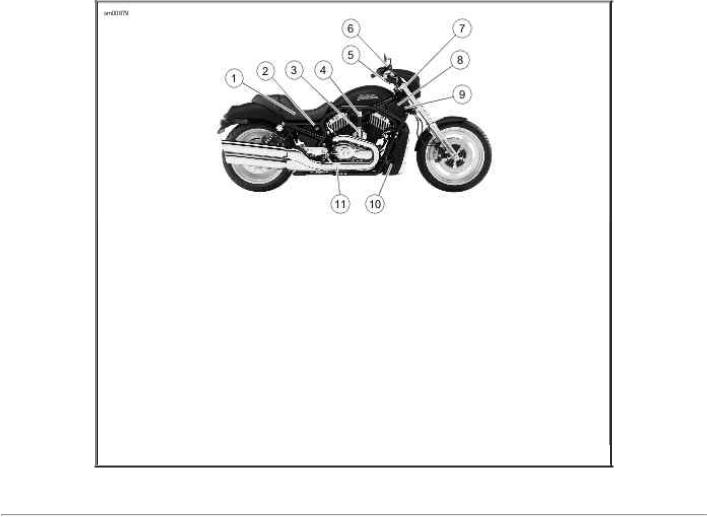
1.Fuel filler cap (under seat)
2.Ignition switch/seat release
3.Water pump
4.Thermostat
5.Odometer reset switch
6.Front brake master cylinder and switch
7.Fork lock
8.Coolant overflow bottle
9.Maxifuse (under cover)
10.Rear brake reservoir
11.Rear brake master cylinder
2006 VRSCD Night Rod Right Side View
Vehicle Identification Number: VRSC Models
See V.I.N. Stamping Location: VRSCR Model. The full 17digit serial or Vehicle Identification Number (V.I.N.) is stamped on the steering head and on a label located on the left frame tube above the front engine cylinder.
An abbreviated V.I.N. is stamped on the left side crankcase above the sump.
NOTE:
Always give the full 17digit Vehicle Identification Number when ordering parts or making any inquiry about your motorcycle.
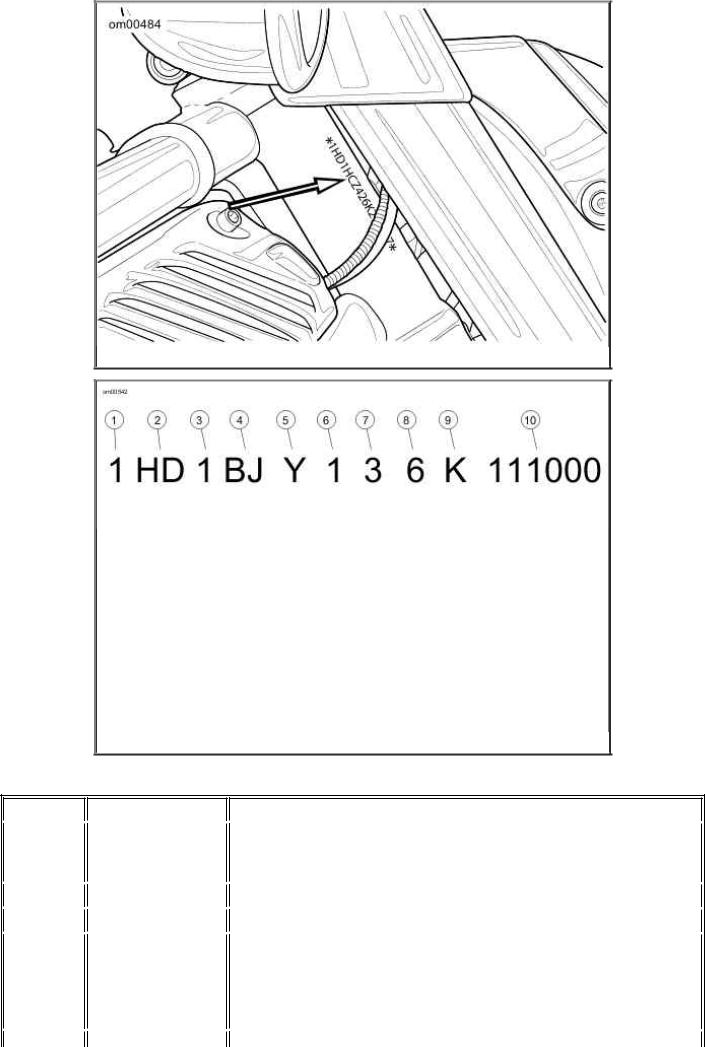
V.I.N. Stamping Location: VRSCR Model
1.Market designation (1 character)
2.Manufacturer (2 characters)
3.Motorcycle type (1 character)
4.Model (2 characters)
5.Engine type (1 character)
6.Introduction date (1 character)
7.V.I.N. check digit (1 character)
8.Model year (1 character)
9.Assembly plant (1 character)
10.Sequential number (6 characters)
Typical HarleyDavidson Vehicle Identification Number
2006 HarleyDavidson VRSC V.I.N. Breakdown
|
POSITION |
DESCRIPTION |
POSSIBLE VALUES |
||
|
1 |
Market |
1=Originally manufactured for sale within the United States |
||
|
designation |
5=Originally manufactured for sale outside the United States |
|||
|
2 |
Manufacturer |
HD=HarleyDavidson |
||
|
3 |
Motorcycle type |
1=Heavyweight motorcycle 901cc and larger |
||
|
4 |
Model |
HA=VRSCA |
||
|
HC=VRSCR |
||||
|
HD=VRSCD |
||||
|
5 |
Engine type |
A=Revolution, 1130cc liquidcooled, fuel injected 105 HP HDI |

|
only |
||||||
|
Z=Revolution, 1130cc liquidcooled, fuel injected |
||||||
|
6 |
Introduction date |
1=Regular |
||||
|
2=Midyear |
||||||
|
3=California/regular |
||||||
|
4=Cosmetic changes and/or special introductory date |
||||||
|
5=California/cosmetic changes and/or special introductory date |
||||||
|
6=California/midyear |
||||||
|
7 |
V.I.N. check digit |
Can be 09 or X |
||||
|
8 |
Model year |
6=2006 |
||||
|
9 |
Assembly plant |
K=Kansas City, MO USA |
||||
|
10 |
Sequential |
varies |
||||
|
number |
||||||
Specifications
Specifications: 2006 VRSC Models
Capacities: 2006 VRSC Models
|
ITEM |
U.S. |
LITERS |
||||
|
Fuel tank: VRSCR |
5.0 gal |
18.9 |
||||
|
Fuel tank: VRSCA/D |
3.7 gal |
14.0 |
||||
|
Oil capacity with filter |
5 qt. |
4.3 |
||||
|
Coolant capacity |
2.5 qt. |
2.4 |
||||
Ignition System: 2006 VRSC Models
|
ITEM |
SPECIFICATION |
||||||
|
Timing setting |
Not adjustable |
||||||
|
Battery |
12 volt, 12 amp/hr., 200 CCA |
||||||
|
Spark plug type |
10R12A |
||||||
|
Spark plug gap |
0.035 in. |
0.89 mm |
|||||
|
Spark plug torque |
17 ftlbs |
23 Nm |
|||||
Engine: 2006 VRSC Models
ITEM SPECIFICATION
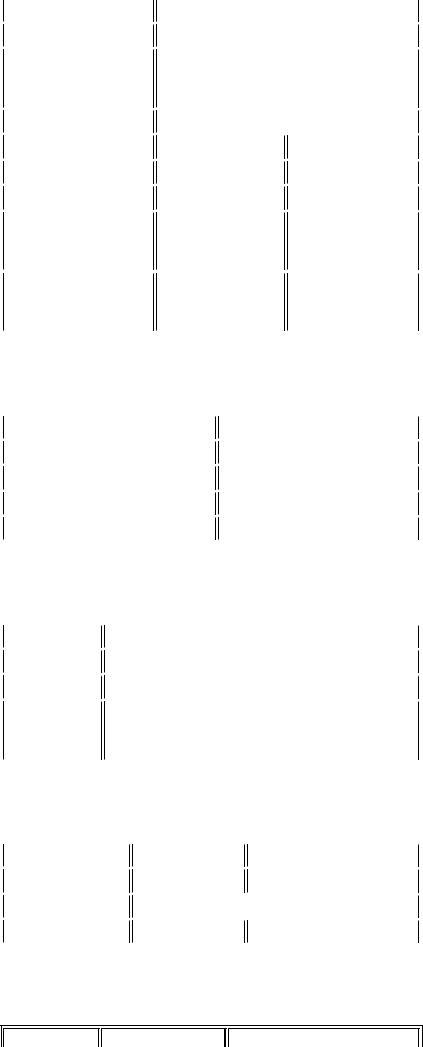
|
Number of cylinders |
2 |
|||||
|
Type |
4cycle, DOHC, 60 degree VType, |
|||||
|
water cooled |
||||||
|
Compression ratio |
11.31 |
|||||
|
Bore |
3.94 in. |
100.00 mm |
||||
|
Stroke |
2.84 in. |
72.00 mm |
||||
|
Displacement |
69 cu. in. |
1130cc |
||||
|
Torque: VRSCA |
74 ftlbs |
100 Nm |
||||
|
@7000 RPM |
@7000 RPM |
|||||
|
Torque: VRSCD/R |
80 ftlbs |
108 Nm |
||||
|
@7000 RPM |
@7000 RPM |
|||||
Drivetrain: 2006 VRSC Models
|
COMPONENT |
TYPE |
|||
|
Primary drive |
gear |
|||
|
Final drive |
belt |
|||
|
Rear sprocket |
compensated |
|||
|
Clutch |
hydraulic |
|||
|
Transmission: 2006 VRSC Models |
||||
|
ITEM |
SPECIFICATION |
|||
|
Type |
foot shift |
|||
|
Speeds |
5 forward |
|||
|
Gears |
1st, 5th spur gears |
|||
|
2nd, 3rd, 4th helical gears |
||||
Sprocket Teeth: 2006 VRSC Models
|
ITEM |
DOMESTIC |
INTERNATIONAL |
||||
|
Transmission |
28 |
30 |
||||
|
Rear wheel |
72 |
|||||
|
Ratio |
0.42 |
0.39 |
||||
Gear Ratios: 2006 VRSC Models

|
GEAR |
DOMESTIC |
INTERNATIONAL |
||||
|
1st gear |
11.752 |
10.969 |
||||
|
2nd gear |
7.898 |
7.371 |
||||
|
3rd gear |
6.322 |
5.900 |
||||
|
4th gear |
5.459 |
5.095 |
||||
|
5th gear |
4.889 |
4.563 |
||||
Weights: 2006 VRSC Models
|
ITEM |
VRSCA |
VRSCD |
VRSCR |
|||||||||||
|
LB. |
KG |
LB. |
KG |
LB. |
KG |
|||||||||
|
Weight (as shipped from factory) |
596 |
270.6 |
607 |
276 |
618 |
281 |
||||||||
|
GVWR |
1060 |
481 |
1060 |
481 |
1060 |
481 |
||||||||
|
GAWR Front |
372 |
169 |
372 |
169 |
372 |
169 |
||||||||
|
GAWR Rear |
688 |
312 |
688 |
312 |
688 |
312 |
||||||||
Tire Sizes: 2006 VRSC Models
|
MODEL |
MOUNT |
SIZE |
NUMBER |
|||||
|
VRSCA |
Front |
19 in. |
D207 F120/70ZR19 60W |
|||||
|
Rear |
18 in. |
D207 180/55ZR18 74W |
||||||
|
VRSCD |
Front |
19 in. |
D207 F120/70ZR19 60W |
|||||
|
Rear |
18 in. |
D207 180/55ZR18 74W |
||||||
|
VRSCR |
Front |
19 in. |
D207 F120/70ZR19 60W |
|||||
|
Rear |
18 in. |
D207 180/55ZR18 74W |
||||||
Tire Pressures: 2006 VRSC Models
|
MODEL |
LOAD |
TIRE PRESSURE (COLD) |
||||||||||
|
FRONT |
REAR |
|||||||||||
|
PSI |
kPa |
PSI |
kPa |
|||||||||
|
VRSCA |
solo rider |
36 |
248 |
38 |
262 |
|||||||
|
rider and passenger |
36 |
248 |
40 |
276 |
||||||||
|
VRSCD |
solo rider |
36 |
248 |
38 |
262 |
|||||||
|
rider and passenger |
36 |
248 |
40 |
276 |
||||||||
|
VRSCR |
solo rider |
36 |
248 |
38 |
262 |
|||||||
|
rider and passenger |
36 |
248 |
40 |
276 |


Bulb Chart: 2006 VRSC Models
|
LAMP |
DESCRIPTION |
BULBS |
CURRENT |
HD PART |
||||||
|
(ALL LAMPS 12 VOLT) |
REQUIRED |
DRAW |
NUMBER |
|||||||
|
(AMPERAGE) |
||||||||||
|
Headlamp |
low beam |
1 |
4.30 |
6888101 |
||||||
|
VRSCA/D/R |
high beam |
1 |
5.10 |
6771701 |
||||||
|
Headlamp |
low beam |
1 |
4.30 |
6888101 |
||||||
|
VRSCA/D/R |
||||||||||
|
high beam |
1 |
5.10 |
6771701 |
|||||||
|
international |
||||||||||
|
Position lamp |
position lamp |
1 |
0.36 |
5343697 |
||||||
|
international |
||||||||||
|
Tail and stop |
tail lamp |
1 |
0.59 |
68168 |
||||||
|
lamp |
89A |
|||||||||
|
stop lamp |
1 |
2.25 |
68168 |
|||||||
|
89A |
||||||||||
|
license plate illumination |
2 |
0.33 |
6819395 |
|||||||
|
tail lamp international |
1 |
0.42 |
68169 |
|||||||
|
90A |
||||||||||
|
stop lamp international |
1 |
1.75 |
68169 |
|||||||
|
90A |
||||||||||
|
license plate illumination |
2 |
0.37 |
5343697 |
|||||||
|
international |
||||||||||
|
Turn signal |
front/running |
2 |
2.25/0.59 |
6816889 |
||||||
|
lamp |
||||||||||
|
rear |
2 |
2.25 |
68572 |
|||||||
|
64B |
||||||||||
|
front/running international |
2 |
1.75 |
6816384 |
|||||||
|
rear international |
2 |
1.75 |
6816384 |
|||||||
|
Instrument |
Speedometer, tachometer and odometer are illuminated with nonserviceable |
|||||||||
|
panel |
LED assemblies. |
|||||||||
Dimensions: 2006 VRSC Models
|
ITEM |
VRSCA |
VRSCD |
VRSCR |
||||||||||||||
|
IN. |
MM |
IN. |
MM |
IN. |
MM |
||||||||||||
|
Wheelbase |
67.5 |
1714.5 |
66.92 |
1699.72 |
66.8 |
1697.0 |
|||||||||||
|
Overall length |
93.6 |
2377.4 |
93.03 |
2363.0 |
93.7 |
2380.0 |
|||||||||||
|
Overall width |
36.0 |
914.9 |
36.4 |
924.8 |
32.4 |
823.0 |
|||||||||||
|
Overall height |
48.9 |
1240.8 |
43.5 |
1105.9 |
48.7 |
1237.5 |
|||||||||||
|
Road clearance |
5.0 |
127.0 |
5.0 |
127 |
6.7 |
170.0 |
|||||||||||
|
Saddle height |
26.0 |
660.4 |
26.0 |
660.4 |
30.0 |
762.0 |
|||||||||||

NOTE:
Gross Vehicle Weight Rating GVWR (maximum allowable loaded vehicle weight) and corresponding Gross Axle Weight Ratings (GAWR) are given on a label located on the left frame tube above the front engine cylinder.
Tire Data: VRSC Models
Match tires, tubes, air valves and caps to the correct wheel rim. Contact a HarleyDavidson dealer. Mismatching can result in damage to the tire bead, allow tire slippage on the rim or cause tire failure, which could result in death or serious injury. (00023a)
Use only HarleyDavidson approved tires. See a Harley Davidson dealer. Using nonapproved tires can adversely affect stability, which could result in death or serious injury. (00024a)
Tubeless tires are used on all HarleyDavidson cast and disc wheels.
Tire sizes are molded on the tire sidewall. Inner tube sizes are printed on the tube.
HarleyDavidson front and rear tires are not the same. Interchanging front and rear tires can cause tire failure, which could result in death or serious injury. (00026a)
Do not inflate tire beyond maximum pressure as specified on sidewall. Over inflated tires can blow out, which could result in death or serious injury. (00027a)
HarleyDavidson tires are equipped with wear bars that run horizontally across the tread. When wear bars become visible and only 1/32 in. (0.8 mm) tread depth remains, replace tire immediately. Using a worn tire can adversely affect stability and handling, which could result in death or serious injury. Use only Dunlop HarleyDavidson replacement tires. (00090a)
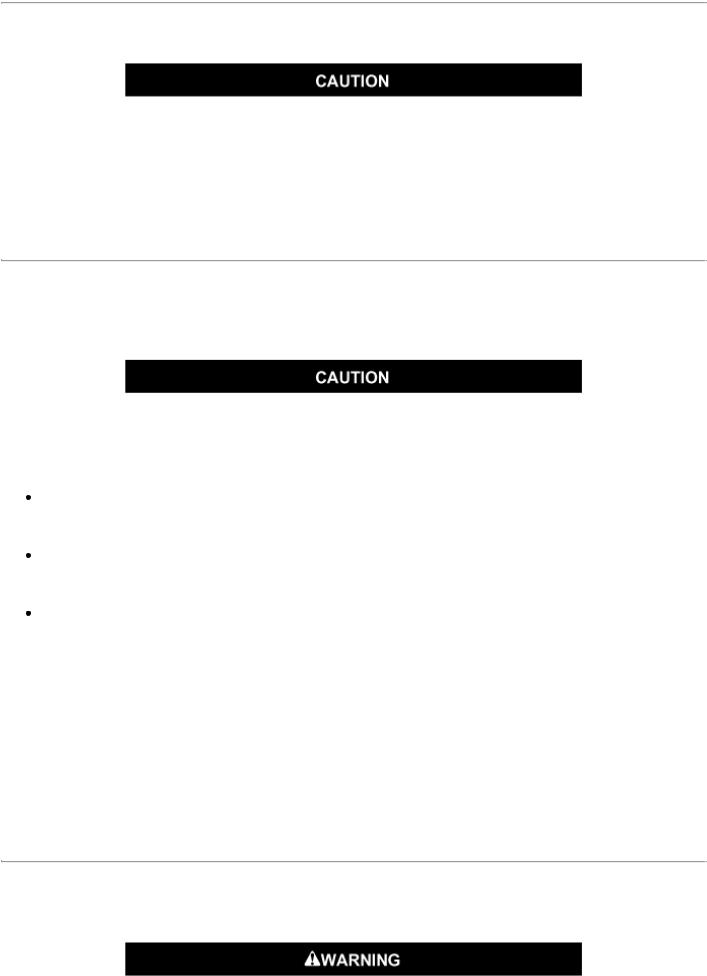
See Specifications: 2006 VRSC Models for tire pressures and sizes.
Catalytic Converters
International motorcycles are equipped with catalytic converters.
Do not operate catalytic converterequipped vehicle with engine misfire or a nonfiring cylinder. If you operate the vehicle under these conditions, the exhaust will become abnormally hot, which can cause vehicle damage, including emission control loss. (00149a)
Gasoline Blends
Your motorcycle was designed to get the best performance and efficiency using unleaded gasoline. Most gasoline is blended with alcohol and/or ether to create oxygenated blends. The type and amount of alcohol or ether added to the fuel is important.
Do not use gasoline that contains methanol. Doing so can result in fuel system component failure, engine damage and/or equipment malfunction. (00148a)
Gasoline containing METHYL TERTIARY BUTYL ETHER (MTBE): Gasoline/MTBE blends are a mixture of gasoline and as much as 15% MTBE. Gasoline/MTBE blends can be used in your motorcycle.
ETHANOL is a mixture of 10% ethanol (Grain alcohol) and 90% unleaded gasoline. Gasoline/ethanol blends can be used in your motorcycle if the ethanol content does not exceed 10%.
REFORMULATED OR OXYGENATED GASOLINES (RFG): Reformulated gasoline is a term used to describe gasoline blends that are specifically designed to burn cleaner than other types of gasoline, leaving fewer tailpipe emissions. They are also formulated to evaporate less when you are filling your tank. Reformulated gasolines use additives to oxygenate the gas. Your motorcycle will run normally using this type of gas and Harley Davidson recommends you use it when possible, as an aid to cleaner air in our environment.
You may find that some gasoline blends adversely affect the starting, driveability or fuel efficiency of your motorcycle. If you experience one or more of these problems, it is recommended you operate your motorcycle on straight unleaded gasoline.
Fuel
Refer to Octane Ratings. Always use a good quality unleaded gasoline. Octane ratings are usually found on the pump.
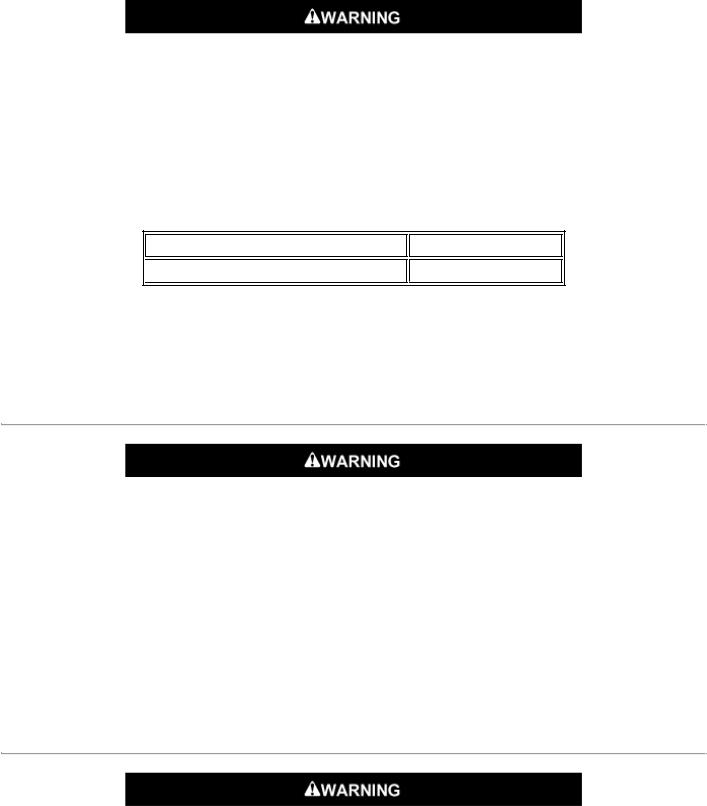
Avoid spills. Slowly remove filler cap. Do not fill above bottom of filler neck insert, leaving air space for fuel expansion. Secure filler cap after refueling. Gasoline is extremely flammable and highly explosive, which could result in death or serious injury. (00028a)
Use care when refueling. Pressurized air in fuel tank can force gasoline to escape through filler tube. Gasoline is extremely flammable and highly explosive, which could result in death or serious injury. (00029a)
Modern service station pumps dispense a high flow of gasoline into a motorcycle fuel tank making air entrapment and pressurization a possibility.
Octane Ratings
SPECIFICATION

Controls and Indicators
General: Controls and Indicators
Read the CONTROLS AND INDICATORS section before riding your motorcycle. Failure to understand the operation of the motorcycle could result in death or serious injury. (00043a)
Some features explained are unique to certain models. These features may be available as accessories for your HarleyDavidson motorcycle. See a HarleyDavidson dealer for a complete list of accessories that will fit your specific motorcycle.
Refer to the side view photographs in the front of the manual to locate the items discussed in this section. See 2006 VRSC Models.
Ignition Switch: VRSC Models
The automaticon headlamp feature provides increased visibility of the rider to other motorists. Be sure headlamp is on at all times. Poor visibility of rider to other motorists can result in death or serious injury. (00030b)

See the YOUR OWNER’S MANUAL section at the beginning of this manual. Be sure to record all your key numbers in the space provided at the front of this book.
The ignition switch controls electrical functions of the motorcycle.
Protect your vehicle against theft. After parking your motorcycle, lock the steering head and remove ignition key from switch. Failure to lock your motorcycle may result in theft and/or equipment damage. (00151a)
Do not operate vehicle with forks locked. Locking the forks restricts the vehicle’s turning ability, which could result in death or serious injury. (00035a)
Do not lubricate barrel locks with petroleum based lubricants or graphite. Inoperative locks may result. (00152a)
Turn the ignition switch to the LOCK position and remove the key before locking the motorcycle. Leaving the key in the ACC position will keep the instrument lights on and result in a discharged battery. (00156a)
To review the functions of each switch position, refer to Ignition Switch: 2006 VRSC Models.
1.See Ignition/Seat Release Switch: VRSCA/D Models or Ignition Switch: VRSCR Model. To remove the key from the ignition turn it to the OFF position.
2.Pull the key outward.
3.Always turn switch to OFF position and remove key after operation and when leaving bike parked.
NOTES:
ACCAccessories and hazard warning flasher can be turned on. Instrument lamps are on. Brake lamp and horn can be activated. Key may be removed.
The lamps operate when the switch is in the IGN position, as required by law in some localities.
HarleyDavidson recommends removing key from ignition/fork lock before operating motorcycle. If you do not remove key, it can fall out during operation.
The ignition key also fits the front fork lock.
Ignition Switch: 2006 VRSC Models
|
MODEL SWITCH REMOVE |
FUNCTIONS |
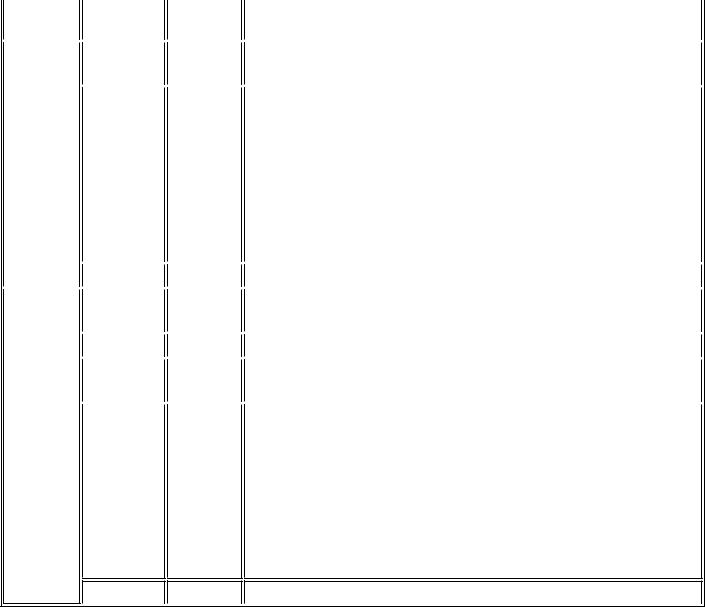
|
POSITION |
KEY |
|||||
|
VRSCR |
OFF |
Yes |
Turns off ignition, lamps and accessories (disconnects battery |
|||
|
voltage from IGN and ACC terminals). |
||||||
|
ACC |
Yes |
Turns on accessories. Hazard warning flashers can be |
||||
|
operated. Instrument lamps are on. Brake lamp and horn can |
||||||
|
be activated (connects battery voltage to ACC terminal). |
||||||
|
NOTE: When switching to the ACC position, a startup |
||||||
|
diagnostic performs a systems check. The instrument |
||||||
|
background lighting illuminates, gauge needles sweep their full |
||||||
|
range of motion and the battery, security, coolant temperature |
||||||
|
and check engine indicator lamps illuminate. |
||||||
|
IGN |
Yes |
Turns on ignition, lamps and accessories. |
||||
|
VRSCA/D |
FUEL |
No |
Unlocks seat latch. Seat is hinged and can be lifted from the |
|||
|
right side allowing access to fuel filler cap. |
||||||
|
LOCK |
Yes |
Locks seat latch and switch. |
||||
|
OFF |
Yes |
Turns off ignition, lamps and accessories (disconnects battery |
||||
|
voltage from IGN and ACC terminals). |
||||||
|
ACC |
Yes |
Turns on accessories. Hazard warning flashers can be |
||||
|
operated. Instrument lamps are on. Brake lamp and horn can |
||||||
|
be activated (connects battery voltage to ACC terminal). |
NOTE: When switching to the ACC position, a startup diagnostic performs a systems check. The instrument background lighting illuminates, gauge needles sweep their full range of motion and the battery, security, coolant temperature and check engine indicator lamps illuminate.
|
IGN |
Yes |
Turns on ignition, lamps and accessories. |
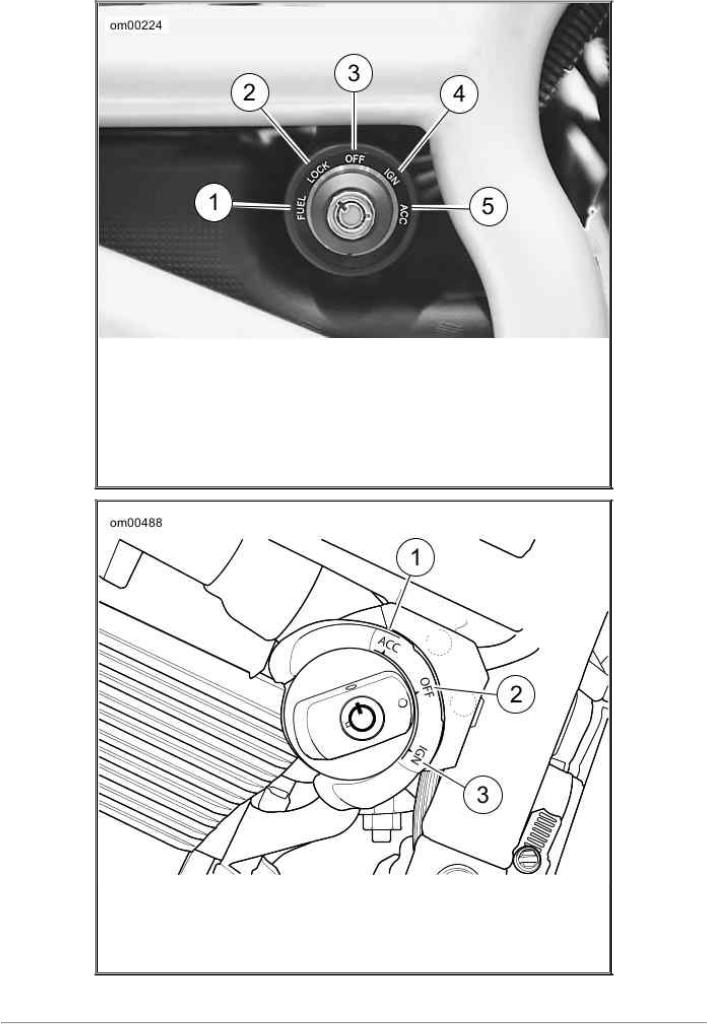
1.Fuel/seat release position
2.Lock position
3.Off position
4.Ignition position
5.Accessory position
Ignition/Seat Release Switch: VRSCA/D
Models
1.Accessory position
2.OFF position
3.Ignition position
Ignition Switch: VRSCR Model
Hand Controls: Basic Operation

Electric Starter Switch
NOTE:
Off/Run switch MUST be in RUN position to operate engine.
See Handlebar Controls: VRSC Models. The electric starter switch is located on the right handlebar control group. See Starting the Engine: EFI Models for detailed operation procedures.
1.Put the engine off/run switch in the RUN position and the transmission in neutral. Neutral (green) indicator lamp should be illuminated.
2.See Ignition/Seat Release Switch: VRSCA/D Models. Turn ignition/headlamp key switch to ON and push the START switch to operate starter motor.
Engine OFF/RUN Switch
See Handlebar Controls: VRSC Models. The engine off/run switch (7) turns the ignition power ON or OFF. The engine off/run switch is located on the right handlebar control. Push the top portion of the engine off/run switch to turn off ignition power and shut the engine off. Push the bottom portion of the engine off/run switch to turn on ignition power.
NOTES:
The engine off/run switch must be in the ON position to start or operate the engine. The engine off/run switch should be used to shut the engine off.
1.To shut the engine off, push the top of the off/run switch to the ignition OFF position.
2.See Ignition/Seat Release Switch: VRSCA/D Models. Turn the ignition key to the OFF position to turn the ignition power completely OFF.
Throttle Control Grip
See Handlebar Controls: VRSC Models. The throttle control grip (9) is located on the right handlebar control and is operated with the right hand.
To reduce rider fatigue on long trips, a spring loaded throttle friction adjustment screw (10) is located at the bottom of the throttle grip clamp on noncruise equipped models.
1.Slowly turn throttle control grip clockwise (toward the front of the bike) to close the throttle (decelerate).
2.Slowly turn throttle control grip counterclockwise (toward rear of bike) to open the throttle (accelerate).
Do not tighten throttle friction adjustment screw to the point where the engine will not return to idle automatically. Overtightening can lead to loss of vehicle control, which could result in death or serious injury. (00031b)
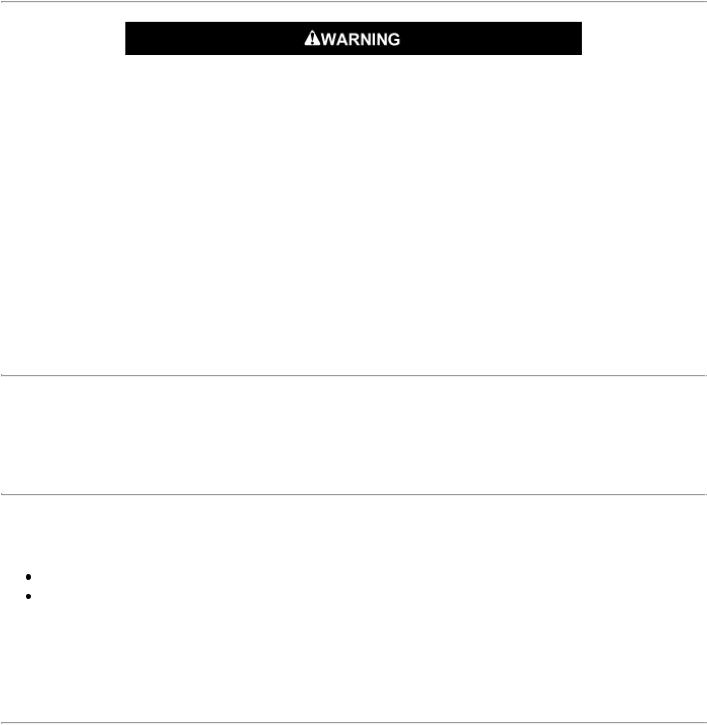
3.Unscrew the throttle friction adjustment screw so the throttle returns to the idle position when the hand is removed from the grip.
4.Screw the throttle adjustment screw in to increase friction on grip. This provides a damping effect on throttle motion.
NOTE:
The throttle friction adjustment screw should not be used under normal stop and go operating conditions.
Clutch Hand Lever
Do not position fingers between hand control lever and handlebar grip. Improper hand positioning can impair control lever operation and cause loss of vehicle control, which could result in death or serious injury. (00032a)
The clutch hand lever (1) is located on the left handlebar and is operated with the fingers of the left hand.
1.Slowly pull clutch hand lever in against handlebar grip to fully disengage clutch.
2.Shift to first gear using the gear shifter lever. See Shifting Gears.
3.Slowly release the clutch hand lever to engage clutch.
Horn Switch
The horn is operated by pushing on the horn switch (2) located on the left handlebar control group.
Headlamp Dimmer Switch
The headlamp dimmer switch (3) is located on the left handlebar. The switch has two positions to activate the headlamps high or low beams.
Press the top of the headlamp dimmer beam switch to activate the high beam. Press the bottom of the headlamp dimmer switch to return to the low beam.
See Indicator Lamps: VRSCR Model. The (blue) high beam indicator lamp will illuminate when the high beam is on.
Turn Signal Switches
Each handlebar control group contains a turn signal switch.
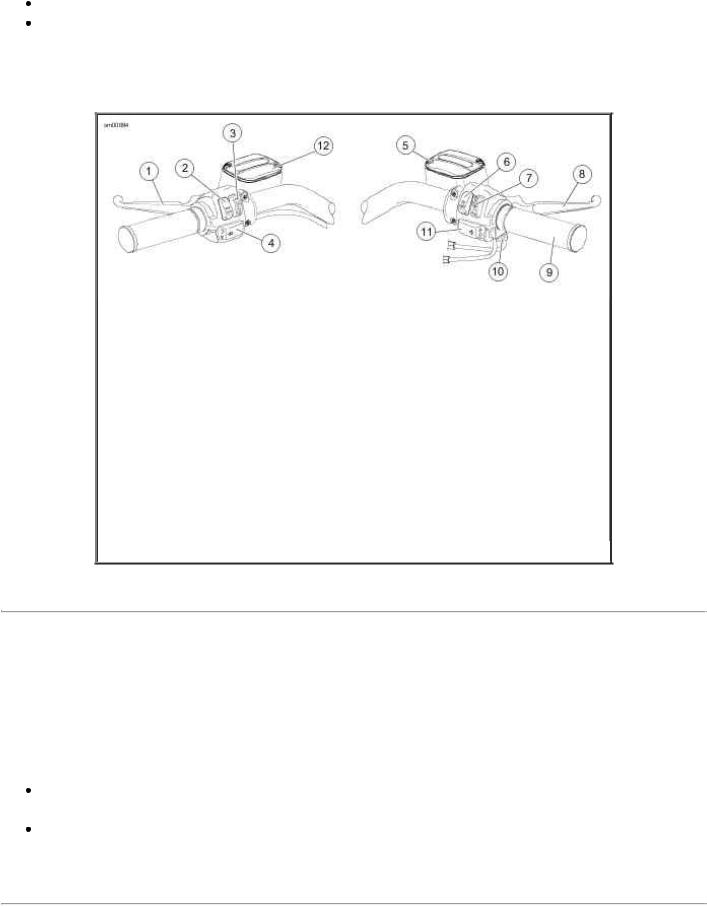
The right turn signal switch (11) operates the right front and right rear flashing lamps. The left turn signal switch (4) operates the left front and left rear flashing lamps.
NOTE:
Front turn signal lamps also function as running lamps.
1.Clutch hand lever
2.Horn switch
3.Headlamp dimmer switch
4.Left turn signal switch
5.Front brake master cylinder reservoir
6.Electric starter switch
7.Engine off/run switch
8.Brake hand lever
9.Throttle control grip
10.Throttle friction adjusting screw
11.Right turn signal switch
12.Clutch master cylinder reservoir
Handlebar Controls: VRSC Models
Turn Signal Switch Operation
The turn signal switches are used by the turn signal module to control turn signal operation based on vehicle speed, vehicle acceleration and turn completion.
Momentarily depress the desired turn signal switch. The turn signal lamps will begin and continue flashing until they are manually or automatically cancelled. As long as the motorcycle is stationary, the signals will flash.
NOTES:
If you are signaling to turn in one direction and you depress the switch for the opposite turn signal, the first signal is cancelled and the opposite side begins flashing.
If you want to stop the lamps from flashing, briefly depress the turn signal switch a second time. The turn signal lamps will stop flashing.
Hazard Warning 4Way Flasher
Use the following method to activate the fourway flashers.
1.With the ignition key ON and security system disarmed (models with security only), press the left and right turn signal switches at the same time.
2.Turn the ignition key OFF and arm the security system if present and desired. The fourway

flashers will continue for two hours.
3.To cancel fourway flashing, disarm the security system if necessary, turn the ignition key ON and press the left and right turn signal switches at the same time.
This system allows a stranded vehicle to be left in the fourway flashing mode and secured until help is found.
Indicator Lamps: VRSC Models
See Indicator Lamps: VRSCR Model. Ten indicator lamps are provided.
The two green TURN indicator lamps flash when turn signals are activated; therefore, flashing indicates the chosen turn direction. When the 4way hazard flashers are operating, both turn indicators flash simultaneously.
The blue HIGH BEAM indicator lamp, when lit, signals high beam headlamp operation. The green NEUTRAL lamp, when lit, signals the transmission is in neutral gear.
The red OIL PRESSURE indicator lamp, when lit, signals that oil is not circulating through the engine.
The red ENGINE COOLANT TEMPERATURE indicator lamp, when lit, signals the coolant temperature has exceeded 243° F (117° C).
The red ENGINE DIAGNOSTIC indicator lamp, when lit, signals that the vehicle’s computer has detected an engine malfunction.
The red ALTERNATOR indicator lamp, when lit, signals there is a malfunction in the charging circuit and the battery is not being properly charged.
The red SECURITY STATUS indicator lamp indicates the status of the vehicle’s security system. It is normal for this to light with or without a security system.
The yellow LOW FUEL indicator lamp, when lit, signals the fuel tank is almost empty.
NOTES:
The OIL PRESSURE indicator lamp will glow when the ignition is turned on prior to starting the engine. With the engine running, the lamp should be off when engine speed is above idle.
To learn more about the SECURITY STATUS indicator lamp, see the HD Factory Security Section later in this manual.
Several other circumstances that could cause the red oil pressure indicator lamp to illuminate include:
An insufficient or diluted oil supply causing the oil pressure indicator lamp to remain lit at speeds above idling.
An oil feed clogged with ice and sludge in freezing weather, preventing oil circulation. A grounded oil signal switch wire.
A faulty oil signal switch.
A damaged or improperly installed check valve. Trouble with the oil pump.
If the oil pressure indicator lamp remains lit, always check the oil supply first. If the oil supply is normal and the lamp is still lit, stop the engine at once and do not ride further until the trouble is located and the necessary repairs are
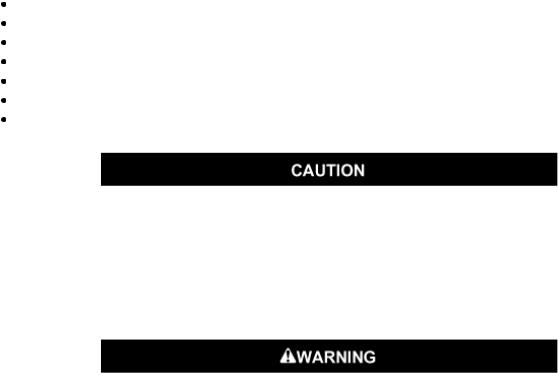
made. Failure to do so may result in engine damage. (00157a)
Several other circumstances that could cause the red engine coolant temperature indicator lamp to illuminate include:
Cooling fan malfunction.
Low coolant level.
Thermostat malfunction.
Temperature gauge malfunction.
Blocked coolant passages.
Radiator cap malfunction.
Coolant malfunction.
If the engine coolant temperature indicator lamp remains lit, always check the coolant level. If the coolant level is normal and the lamp is still lit, stop the engine at once and do not ride further until the trouble is located and the necessary repairs are made. Failure to do so may result in engine damage. (00158a)
Do not remove radiator filler cap when engine is hot. The cooling system is under pressure and hot coolant and steam can escape, which could cause severe burns. Allow engine to cool before servicing the cooling system. (00091a)
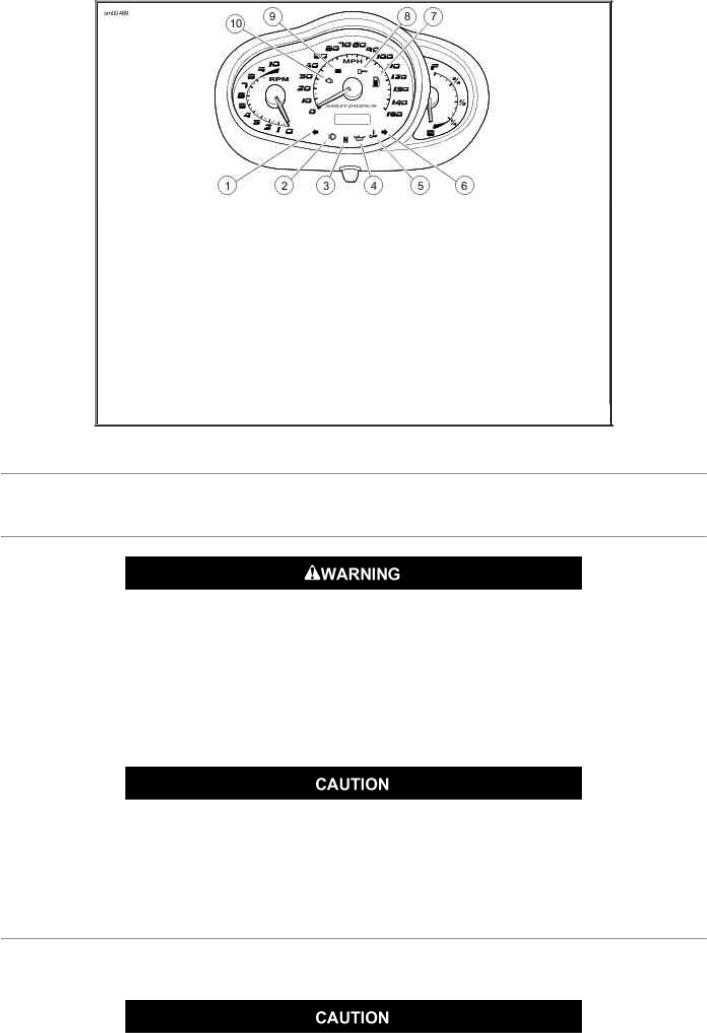
1.Left turn
2.High beam
3.Neutral
4.Oil
5.Engine coolant
6.Right turn
7.Low fuel
8.Security system
9.Alternator
10.Engine diagnostic
Indicator Lamps: VRSCR Model
Instruments: VRSC Models
Speedometer
Travel at speeds appropriate for road and conditions and never travel faster than posted speed limit. Excessive speed can cause loss of vehicle control, which could result in death or serious injury. (00008a)
See Instrument Cluster: VRSCR Model. The speedometer registers miles per hour (kilometers per hour for international) of forward speed.
Never attempt to tamper with or alter the vehicle odometer. This is illegal. Tampering with or altering a vehicle odometer may cause equipment damage. (00160a)
Tachometer
The tachometer registers the engine speed in revolutions per minute (RPM).

See OPERATING RECOMMENDATIONS section. Do not operate the engine above maximum safe RPM as shown under OPERATION (red zone on tachometer). Lower the RPM by upshifting to a higher gear or reducing the amount of throttle. Failure to lower RPM may cause equipment damage. (00159a)
Trip Odometer
See Instrument Cluster: VRSCR Model. Use the tripodometer A or tripodometer B to register number of miles/kilometers traveled on a trip or between refueling.
Odometer will wake up when bike is OFF while the function switch is pressed (No need to turn the bike on to check the odometer reading).
Odometer/Trip Odometer/Fuel Range Functions
See Instrument Cluster: VRSCR Model. The speedometer has a single display window for the odometer, trip odometer and fuel range displays. The odometer registers the number of miles (kilometers) the vehicle has traveled. Use the trip odometer to register the number of miles (kilometers) traveled on a trip or between refueling. The fuel range display shows the approximate mileage available with the amount of fuel currently in the fuel tank.
1.Press the rubber covered function switch to change the display window on the speedometer face to either odometer or tripodometer.
2.To reset the tripodometer to zero, press button to reset speedometer display to the ODOMETER mode and hold the button in for approximately 23 seconds.
3.See Instrument Cluster: VRSCR Model. Press the odometer reset switch to change the display window on the speedometer face to odometer, tripodometer, or fuel range. The fuel range function can be identified by the letter ‘r’ on the left side of the display and the calculated number of miles (kilometers) left. When the motorcycle is very low on fuel, the fuel range function displays «r lo».
The speedometer will switch to the tripodometer mode and reset the display to zero. The trip odometer is displayed and reset to zero.
Tip Indicator Lamp
If tip occurs, check all controls for proper operation. Restricted control movement can adversely affect the performance of the brakes, clutch or ability to shift, which could result in loss of vehicle control and death or serious injury. (00350a)
Should motorcycle be tipped over, the word «tip» will appear in the odometer window. To reset, cycle ignition/headlamp key switch ONOFFON.

1.Tachometer
2.Speedometer
3.Fuel gauge
4.Odometer/tripodometer/fuel range display
5.Odometer reset switch
Instrument Cluster: VRSCR Model
Sequential Port Fuel Injection
Check Engine Lamp
See Check Engine and Low Fuel Lamp: VRSCR Model. The engine check lamp is located inside the instrument cluster. Its purpose is to indicate whether or not the engine/engine management system is operating normally. The engine lamp color is red.
The engine lamp normally comes on when the bike’s ignition is first turned on and remains on for approximately 4 seconds, as the engine management system runs a series of selfdiagnostics.
If the engine lamp comes on at any other time, see a HarleyDavidson dealer.
Low Fuel Lamp
See Check Engine and Low Fuel Lamp: VRSCR Model. There is a low fuel warning lamp within the instrument cluster. The low fuel lamp lights up to indicate that there is approximately 1 gallon (3.79 liters) of gasoline left in the tank. The low fuel lamp color is amber.

1.Check engine lamp
2.Low fuel lamp
Check Engine and Low Fuel Lamp: VRSCR
Model
Gear Shift Lever
The clutch must be fully disengaged before attempting a gear shift. Failure to fully disengage the clutch can result in equipment damage. (00182a)
The gear shift lever is located on the left side of the motorcycle and is operated with the left foot.
1.Push the gear shift lever all the way down (full stroke) to shift the transmission to the next lower gear.
2.Lift the gear shift lever all the way up (full stroke) to shift the transmission to the next higher gear.
NOTES:
Release the gear shift lever after each gear change.
The lever must return to its central position before another gear change can be made.
See Gear Shift Lever (Downshift): VRSC Models. First gear is the last gear position that can be found by pushing the gear shift lever full stroke downward.
Neutral is located between first and second gear. The green neutral indicator lamp on the dash will illuminate when the transmission is in neutral.

1.To shift from first gear to neutral, lift the gear shift lever 1/2 of its full stroke.
2.To shift from second gear to neutral, push the gear shift lever downward 1/2 of its full stroke.
When the motorcycle is standing still and the engine is not running, shifting gears requires a different technique. Before shifting in this condition, move the motorcycle backward and forward with the clutch fully disengaged (clutch lever pulled in). While maintaining slight pressure on the shift lever, shift from one gear to another.
Even with the engine running and the motorcycle standing still, difficulty may be experienced in shifting gears. This difficulty occurs because transmission gears are not turning and shifting parts are not lined up to permit engagement.
When difficulty of shifting gears is experienced, do not under any circumstances, attempt to force the shift. The results of such abuse will be a damaged or broken shifter mechanism. (00161a)
See Shifting Gears for more information.
Gear Shift Lever (Downshift): VRSC Models
Brake System

Do not apply brake strongly enough to lock the wheel. A locked wheel will skid and can cause loss of vehicle control, which could result in death or serious injury. (00053a)
The rear brake pedal controls the rear wheel brake and is located on the motorcycle’s right side. Operate the rear brake pedal with the right foot.
The front brake hand lever controls the front wheel brake and is located on the right handlebar. Operate the hand lever with the fingers of the right hand.
Do not position fingers between hand control lever and handlebar grip. Improper hand positioning can impair control lever operation and cause loss of vehicle control, which could result in death or serious injury. (00032a)
Brakes should be applied uniformly and evenly to prevent wheels from locking up. A balance between rear and front braking is generally best.
Jiffy Stand
Always park motorcycle on a level, firm surface. An unbalanced motorcycle can fall over, which could result in death or serious injury. (00039a)
The jiffy stand is located on the left side of the motorcycle and swings outward to support the motorcycle for parking.
The jiffy stand locks when placed in the full forward (down) position with vehicle weight on it. If the jiffy stand is not in the full forward (down) position with vehicle weight on it, the vehicle can fall over which could result in death or serious injury. (00006a)
Be sure jiffy stand is fully retracted before riding. If jiffy stand is not fully retracted, it can contact the road surface causing a loss of vehicle control, which could result in death or serious injury. (00007a)
Rear View Mirrors

Objects in mirrors are closer than they appear. Use caution when judging distance of objects in mirrors. Failure to judge correct distances could result in death or serious injury. (00033a)
Your vehicle is equipped with two convex rear view mirrors.
This type of mirror is designed to give a much wider view to the rear than a flat mirror. However, cars and other objects seen in this type of mirror will look smaller and farther away than they actually are.
Use caution when judging the size or relative distance of objects seen in rear view mirrors. Always adjust the rear view mirrors to clearly reflect the area behind the motorcycle before riding.
NOTE:
Adjust mirrors so you can see a small portion of your shoulders in each mirror. This will help you establish the relative distance of vehicles to the rear of your motorcycle.
Fuel Filler Cap: VRSC Models
The fuel filler cap is located under the seat. To lift up the seat, see Seat: VRSCR Model or
Seat: VRSCA/D Models.
See Fuel Filler Cap: VRSCR Model. To open, turn the fuel filler cap counterclockwise and lift up. To close, turn the fuel filler cap clockwise until it clicks. The ratchet action of the cap prevents overtightening.
NOTE:
The fuel filler cap turns approximately 3/4 turn before it begins unscrewing.
See SAFE OPERATING RULES section and review safety procedures.
Do not spill fuel onto the motorcycle while refueling. Immediately wipe up fuel spills on your motorcycle. Fuel can cause damage to cosmetic surfaces. (00147b)
Use only unleaded fuel in catalytic converterequipped motorcycles. Using leaded fuel will damage the emission control system. (00150b)
Do not store motorcycle with gasoline in tank within the home or garage where open flames, pilot lights, sparks or

electric motors are present. Gasoline is extremely flammable and highly explosive, which could result in death or serious injury. (00003a)
Avoid spills. Slowly remove filler cap. Do not fill above bottom of filler neck insert, leaving air space for fuel expansion. Secure filler cap after refueling. Gasoline is extremely flammable and highly explosive, which could result in death or serious injury. (00028a)
Fuel Filler Cap: VRSCR Model
Fork Lock: VRSC Models
Protect your vehicle against theft. After parking your motorcycle, lock the steering head and remove ignition key from switch. Failure to lock your motorcycle may result in theft and/or equipment damage. (00151a)
See Fork Lock: VRSCR Model. VRSC models have the fork lock incorporated in the steering head on the right hand side.
Do not operate vehicle with forks locked. Locking the forks restricts the vehicle’s turning ability, which could result in death or serious injury. (00035a)
Using the fork lock immediately after parking your motorcycle will discourage unauthorized use or

theft when parking your motorcycle.
1.Turn the fork to the full left position.
2.Insert the ignition key into the fork lock.
3.Push down on the fork lock switch and turn to the full clockwise position.
4.Remove the ignition key.
Fork Lock: VRSCR Model
Rear Shock Absorbers: VRSC Models
General
See Adjusting Rear Shock: VRSC Models. The rear shock absorber spring preload can be adjusted for the weight the motorcycle is to carry and has five preload graduations. Notice the adjustment settings as you turn the collar.
Adjustment
Be sure both shock absorbers are adjusted to same preload position. Improper adjustment can adversely affect stability and handling, which could result in death or

serious injury. (00036a)
The average weight solo rider might use the extended spring preload position (adjustment setting 1 or 2).
1.Place the shock absorber adjustment tool around the lower collar of the shock absorber.
2.Turn the collar clockwise (toward higher numbers) to increase the preload or pressure.
Use the adjustment setting numbers as a reference for equal adjustment of shock absorbers on both the right and left side of the motorcycle. A heavy solo rider might require additional preload or pressure (adjustment setting 3).
Do not turn the shock absorber adjustment collar counterclockwise beyond adjustment setting 1. Doing so may result in equipment damage. (00166a)
Adding a passenger may require maximum preload (adjustment setting 5).
Turn the collar counterclockwise to decrease the preload or pressure.
See Adjusting Rear Shock: VRSC Models. To adjust the rear shock absorber spring preload, turn the spring adjusting cam to the desired position with a spanner wrench. When returning to offcam position, cams should be backed off in opposite direction. A SPANNER WRENCH 94700 52C is available from your HarleyDavidson dealer.
Adjusting Rear Shock: VRSC Models

Spanner Wrench
HD Factory Security System
Basic Security System Operation
The security system provides security and immobilization functions. The security system will disable the starter and the ignition or EFI system. Additional functions include the ability to flash all four turn signals and sound a siren (if purchased as an option) if a theft attempt is detected.
Conditions that activate the security alarm when the system is armed include:
Detecting vehicle movement.
Detecting tampering of the ignition switch circuit. Detecting tampering of the security lamp circuit.
Detecting that a battery disconnect has occurred while armed. (Activates siren only if P&A siren is installed.)
Security System Options
The following configurations are available on the security system unit:
Alarm sensitivity.
Autoarming feature.
Storage mode.
Factory settings for the security system include:
Medium motion alarm sensitivity.
Key fob arming mode.
Storage mode set to 10 days.
FCC Regulations

This device complies with Part 15 of the FCC Rules and with RSS210 of Industry Canada rules.
Operation is subject to the following conditions:
This device may not cause harmful interference.
This device must accept any interference received, including interference that may cause undesired operation.
Arming The System
There are two methods to arm the security system:
Remotearming: See Key Fob. Owners may enable security alarm and immobilization functions with a remote, personally carried transmitter. This transmitter is referred to as a key fob within this document.
Autoarming: Arms the security system within 30 seconds after IGNITION switch is turned OFF. To enable autoarming see Using Autoarming below.
NOTES:
The vehicle cannot be armed with the engine running or the ignition ON. International vehicles are configured for autoarming. This cannot be changed.
Using Key Fob
See Key Fob. Hold down the key fob button until the system responds with two turn signal flashes and two chirps from optional siren. To assign a key fob to a motorcycle, refer to Key Fob Assignment.
Using Autoarming
Autoarming causes the security system to automatically arm itself (without the use of the key fob) within 30 seconds after the ignition key is turned OFF. During this period, the security lamp stays on solid to indicate autoarming is starting up.
The vehicle may be moved during these 30 seconds without triggering the alarm. However, any motion after that period will trigger the security alarm. Upon expiration of the autoarming period, the turn signals flash twice, the security lamp begins to flash and the siren (if installed) chirps twice.
To set the autoarming selection, refer to Autoarming Configuration.

Key Fob
Disarming The System
There are two ways to disarm the system:
Remote disarming: See Key Fob. Owners may disable security alarm and immobilization functions with a remote, personally carried transmitter. This transmitter is referred to as a key fob within this document.
Personal code: If a key fob is not available, the security system allows the rider to disable the security alarm and immobilization functions if the rider knows the previously entered personal code.
NOTE:
Do not forget to enter a personal code for security system vehicles. If a code is not assigned and the key fob is lost or damaged while the vehicle is armed, the security system module must be replaced. Refer to Programming a Personal Code for personal code setup.
Using Key Fob
See Key Fob. Quickly press the key fob button twice. The system will respond with one turn signal flash.
NOTES:
Disarming function may require practice. The key fob button must be pressed twice within 1.5 seconds to send the disarm command. The action is very similar to double clicking a computer mouse. Light quick taps work best; very hard or very slow taps are less likely to work.

If the system is remotely disarmed (with the key fob) but the ignition key is not turned ON within 30 seconds, the system will rearm itself when autoarming is enabled.
Using Personal Code
Enter the five digit personal code you have chosen using the left and right turn signal switches. For complete procedure refer to Entering a Personal Code to Disarm Security System. To create a personal code, refer to Programming a Personal Code.
NOTE:
If you make an error while disarming the security system using the personal code, the alarm will activate for 30 seconds after the last digit is entered. After a failed attempt, the security lamp will flash once every second for 10 minutes. During this time, the vehicle will not accept any attempt to enter a personal code.
Entering a Personal Code to Disarm Security System
|
STEP |
ACTION |
WAIT FOR |
NOTES |
|||
|
NO. |
CONFIRMATION |
|||||
NOTE: The left turn signal switch is used for code number entry and the right turn signal is used as the «enter» key.
|
1 |
Know your 5 digit personal code |
|||
|
2 |
Turn IGN key to ACC |
|||
|
3 |
Hold both turn switches in until |
Security lamp |
||
|
confirmation |
blinks at fast rate |
|||
4Enter first digit of code (a) by pressing left turn switch a times
|
5 |
Press right turn switch 1 time |
Serves as enter key for first digit |
||||
6Enter second digit of code (b) by pressing left turn switch b times
|
7 |
Press right turn switch 1 time |
Serves as enter key for second digit |
||||
8Enter third digit of code (c) by pressing left turn switch c times
|
9 |
Press right turn switch 1 time |
Serves as enter key for third digit |
||||
10Enter fourth digit of code (d) by pressing left turn switch d times
|
11 |
Press right turn switch 1 time |
Serves as enter key for fourth digit |
||||
12Enter fifth digit of code (e) by pressing left turn switch e times
|
13 |
Press right turn switch 1 time |
Security lamp |
System is disarmed. You may use |
|||
|
stops blinking |
the vehicle or program another key |
|||||
|
fob. |
Security Status Lamp

Home /
Motorcycle Repair Service Manuals
/ Harley-Davidson
/ V-Rod Muscle
Harley-Davidson V-Rod Muscle Service Repair Manuals on Motor Era
Motor Era offers service repair manuals for your Harley-Davidson V-Rod Muscle — DOWNLOAD your manual now! Harley-Davidson V-Rod Muscle service repair manuals
Complete list of Harley-Davidson V-Rod Muscle motorcycle service repair manuals:
Harley Davidson VRSCF V-Rod Muscle 2015 Service Manual
Harley Davidson VRSCF V-Rod Muscle 2015 Service Repair Manua
Harley Davidson VRSCF V-Rod Muscle 2009 Service Manual
Harley Davidson VRSCF V-Rod Muscle 2009 Service Manual
Harley Davidson VRSCF V-Rod Muscle 2009 Service Manual PDF
Harley Davidson VRSCF V-Rod Muscle 2015 Service Manual PDF
Harley Davidson VRSCF V-Rod Muscle 2009 Repair Service Manua
Harley Davidson VRSCF V-Rod Muscle 2015 Service Manual PDF
Harley Davidson VRSCF V-Rod Muscle 2009 Service Manual PDF
Harley Davidson VRSCF V-Rod Muscle 2015 Service Manual PDF
Harley Davidson VRSCF V-Rod Muscle 2009 Service Manual
Harley Davidson VRSCF V-Rod Muscle 2015 Service Manual
Harley Davidson VRSCF V-Rod Muscle 2009 Service Manual
Harley Davidson VRSCF V-Rod Muscle 2015 Service Manual
2009 Harley Davidson VRSCF V-Rod Muscle PDF Factory Service & Work Shop Manual Download
2010 Harley Davidson VRSCF V-Rod Muscle PDF Factory Service & Work Shop Manual Download
2011 Harley Davidson VRSCF V-Rod Muscle PDF Factory Service & Work Shop Manual Download
Harley Davidson V-ROD Muscle VRSCF Motorcycle Complete Workshop Service Repair Manual 2012 2013 2014 2015 2016
Harley Davidson VRSCF V-Rod Muscle Complete Workshop Service Repair Manual 2009
Harley Davidson VRSCF-V Rod Muscle Motorcycle 2009 Service Repair Workshop Manual Download Pdf
Harley Davidson V ROD Muscle VRSCF Motorcycle 2012-2016 Service Repair Workshop Manual Download Pdf
2012 . Harley Davidson . VRSCF V-ROD MUSCLE . parts list catalogue manual → View webpages ( download→pdf→url )
2011 . Harley Davidson . VRSCF V-ROD MUSCLE . parts list catalogue manual → View webpages ( download→pdf→url )
2010 . Harley Davidson . VRSCF V-ROD MUSCLE . parts list catalogue manual → View webpages ( download→pdf→url )
2009 . Harley Davidson . VRSCF V-ROD MUSCLE . parts list catalogue manual → View webpages ( download→pdf→url )
2013 . Harley Davidson . VRSCF V-ROD MUSCLE . parts list catalogue manual → View webpages ( download→pdf→url )
►☼◄ 2015 HARLEY DAVIDSON VRSC V-ROD VRSCDX VRSCF SERVICE REPAIR MANUAL PDF DOWNLOAD
HD V-ROD MUSCLE VRSCF BIKE 2012-2016 WORKSHOP SERVICE MANUAL
HD V-ROD MUSCLE VRSCF BIKE 2012-2016 WORKSHOP SERVICE MANUAL
HD V-ROD MUSCLE VRSCF BIKE 2012-2016 WORKSHOP SERVICE MANUAL
SafetyFirst
SafeOperatingRules:VRSCModels
Motorcyclesaredifferentfromothervehicles.They
operate,steer,handleandbrakedifferently.Unskilledor
improperusecouldresultinlossofcontrol,deathor
seriousinjury.(00556c)
Takearidertrainingcourse.
ReadOwner’sManualbeforeriding,addingaccessoriesorservicing.
Wearahelmet,eyeprotectionandprotectiveclothing.
Nevertowatrailer.
Beforeoperatingyournewmotorcycleitisyourresponsibilitytoreadandfollowtheoperatingand
maintenanceinstructionsinthismanual,andfollowthesebasicrulesforyourpersonalsafety.
Knowandrespecttherulesoftheroad(seeRULESOFTHEROADsection).Carefullyread
andobservetherulescontainedintheRIDINGTIPSbookletaccompanyingthisOwner’s
Manual.ReadandfamiliarizeyourselfwiththecontentsoftheMOTORCYCLEHANDBOOK
foryourstate.
Beforestartingengine,checkforproperoperationofbrake,clutch,shifter,throttlecontrols,
correctfuelandoilsupply.
Donotuseaftermarketpartsandcustommadefrontforks
whichcanadverselyaffectperformanceandhandling.
Removingoralteringfactoryinstalledpartscanadversely
affectperformanceandcouldresultindeathorserious
injury.(00001a)
UseonlyHarleyDavidsonapprovedpartsandaccessories.Useofcertainother
manufacturer’sperformancepartswillvoidyournewmotorcyclewarranty.SeeyourHarley
Davidsondealerfordetails.
Stoptheenginewhenrefuelingorservicingthefuel
system.Donotsmokeorallowopenflameorsparksnear
gasoline.Gasolineisextremelyflammableandhighly
explosive,whichcouldresultindeathorseriousinjury.
(00002a)
Donotremoveradiatorfillercapwhenengineishot.The
2009VRodMuscleOwner’sManual


